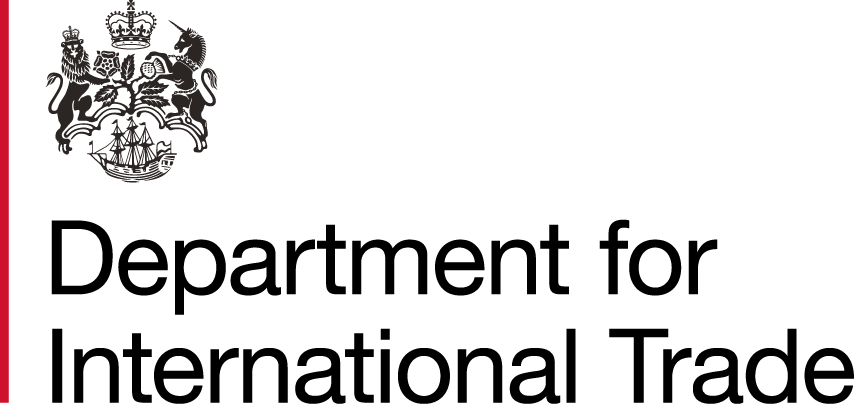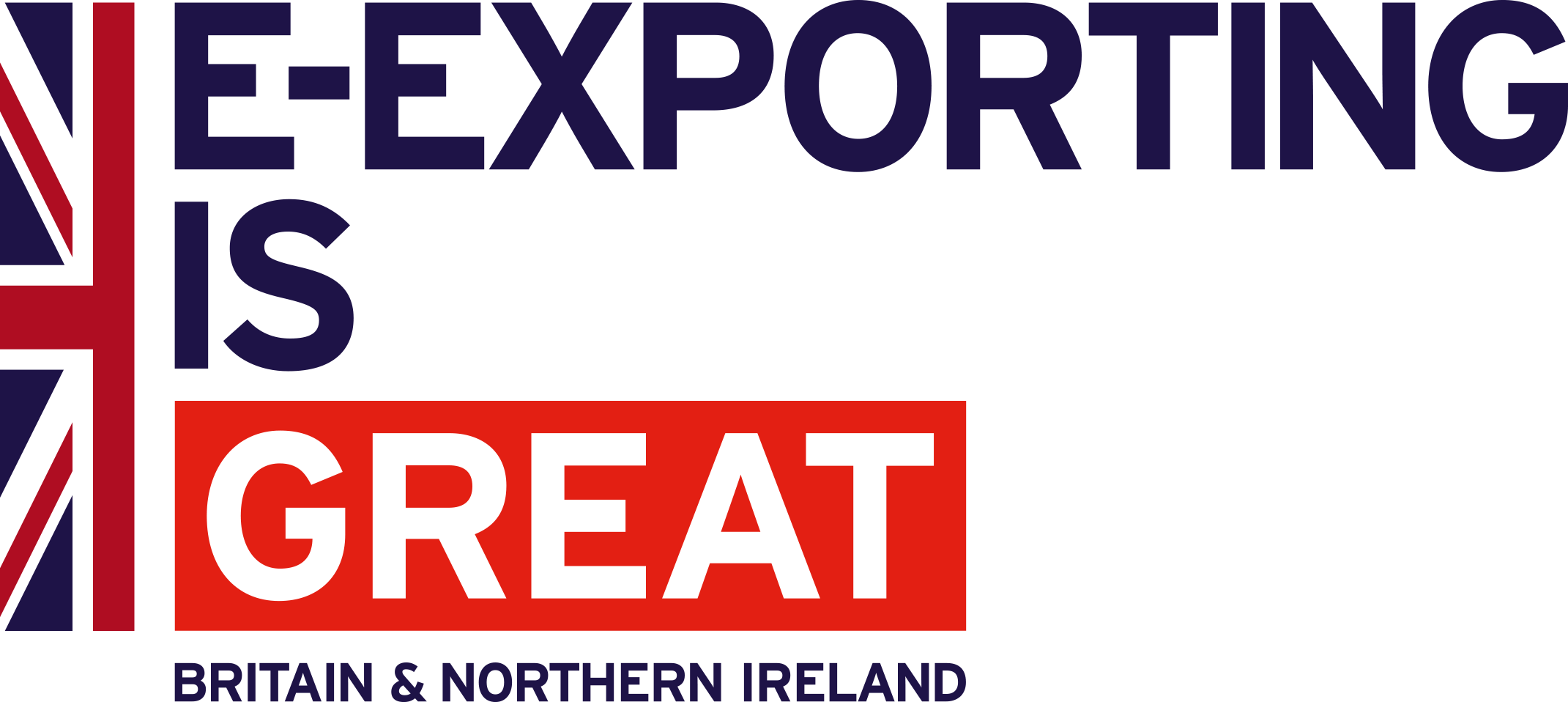The ultimate guide to unlocking global growth: part one
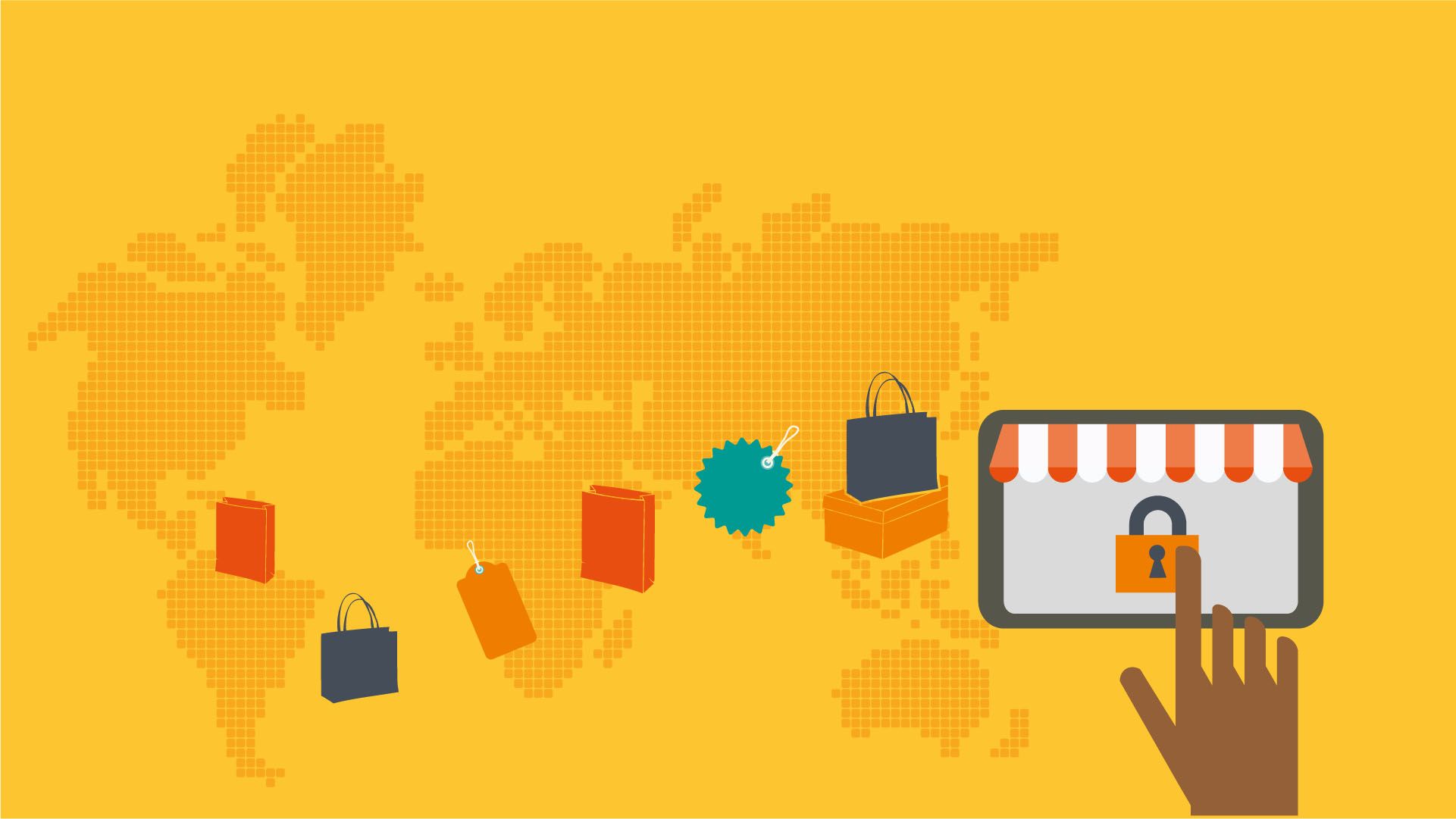
Consumers are increasingly moving to ecommerce, more so now than ever before in light of the coronavirus outbreak.
A recent Retail Economics report found that over a third (35%) of consumers plan to shop more online should the coronavirus persist, while a quarter (25%) said they would avoid shopping destinations altogether.
Evidently, UK retailers are facing unprecedented times, but this does present new opportunities to connect with shoppers on their path to purchase by partnering with global marketplaces.
While many retailers can be deterred from selling via cross-border ecommerce due to the logistical and financial obstacles that must be overcome to succeed in new markets, marketplaces offer a solution to help derive the value and commercial benefits from exporting
Addressing common pain points – from cost of investment to legal concerns – marketplaces offer a proven route to mastering borderless ecommerce.
In this guide, Retail Week and the UK Department for International Trade (DIT) will empower and equip retailers to take the next steps in their international ecommerce journey by capitalising on the potential of global marketplaces.
In this guide you will discover:
- How online marketplaces are “eating the world” and how retailers can capitalise
- What to look for in an international marketplace partner
- First-hand accounts from retailers using marketplaces to drive ROI
- Next steps for retailers to shape their global ecommerce strategy
Borderless retail
Marketplaces offer retailers a low-cost, low-risk route to market, often taking care of important but burdensome details like duties and tariffs

From customs duties and tariffs to compliance and logistics, the path to trading overseas is littered with potential barriers.
However, mastering cross-border ecommerce has never been easier for retailers – or more important – thanks to the proliferation and reach of international online marketplaces such as Amazon and Ebay, just two among many global players.
These platforms address retailers’ exporting pain points, empowering brands to reap the rewards of global ecommerce.
Figures suggest that retailers without a presence on marketplaces simply won’t be able to keep pace as platforms gobble up market share.
For the month of July 2019, Amazon attracted combined global visitor traffic of almost 2.65 billion across desktop and mobile, up from 2.5 billion visits in May 2019*.
In comparison, standalone retailers average monthly visits of 500,000**.
Strike while it’s hot
Marketplaces accounted for 52% of all global online retail sales in 2018, with $1.86trn (£1.42trn) spent globally on the top 100 online marketplaces***.
But it’s not just marketplace behemoths such as Amazon that are gaining traction. Online fashion platform Asos achieved its highest ever visitor numbers in 2019, reports Statista, with 56 million desktop and mobile visits between the months of February and July 2019.
“When it comes to services and delivery times, retailers will never be able to compete with marketplaces”
Hugh Fletcher, the global head of consultancy and innovation at ecommerce agency Wunderman Thompson Commerce, is blunt about the longevity of standalone brands. Speaking to Retail Week in September 2019, Fletcher asserted: “When it comes to services and delivery times, retailers will never be able to compete with marketplaces.”
Fletcher also noted that generating brand awareness online is becoming costlier for single brands due to spiralling customer acquisition costs, while many consumer searches now begin on marketplaces such as Amazon and Asos.
As Matt Coode, partner at strategy consultant OC&C, warns: “If you’re not on marketplaces, your ability to grow digitally is constrained.” Or, as Amazon chief executive and founder Jeff Bezos famously proclaimed: “Marketplaces are eating the world.”

Removing the burden for retailers?
The growth of international marketplaces is unsurprising. For retailers, marketplaces offer a low-cost, low-risk route to market, often taking care of tedious but vital details like customs duties and tariffs.
Amazon Global Store, for example, offers customers an estimation of customs duties, taxes and import fees during checkout, as well as customs clearance on behalf of retailers in eligible countries, taking the burden off the retailer.
Overseas logistics such as last-mile delivery and returns can typically be managed through marketplaces’ partner providers too.
Marketplaces also tend to charge minimal membership fees, relying more on commission, which means retailers won’t pay high fees if products aren’t selling, thereby slashing the risks that traditionally accompany branching out into new markets.
For UK retailers, the ability to export goods to overseas markets can provide a vital new revenue stream and access to customers with burgeoning wallets.
For instance, according to Retail Week’s The Global Consumer Report 2019, German citizens have the biggest spending power in Europe after essentials: 38% of the population have a monthly disposable income of at least €560 (£474). PayPal research conducted in 2017 names the UK as Germany’s favoured online shopping destination.
Get help to sell online overseas – DIT’s Selling Online Overseas tool supports businesses looking to export their products worldwide through online marketplaces.
The multibrand shopping experience
Marketplaces offer a multibrand shopping experience that is enjoyed by consumers for its convenience and choice.
Wunderman Thompson’s The Future Shopper 2019 report finds that 62% of people are excited about purchasing all their goods through one retailer, while 70% of Generation Z consumers (those born in 1996 or later) are attracted to a multibrand shopping environment.
Retail Week’s Adopting a Marketplace Mindset report also reveals that 86% of retailers believe consumers now expect more product choice – even in the same product category.
Speaking to Retail Week in September 2019, Dominique Bonnafoux, strategy director at retail consultancy Fitch, explained the appeal of marketplaces.
“If you can find everything under one roof, and that ‘roof’ or platform knows what you personally like, then the temptation is to sideline shopping on individual sites with multiple orders, payments and return processes due to the extra hassle,” she said.
*According to data platform Statista
**According to OC&C Strategy Consultants partner Michael Jary
***According to data from trade magazine Digital Commerce 360 (formerly Internet Retailer)
Export opportunities
One of the primary advantages of cross-border marketplaces is the potential to reach a vast customer base
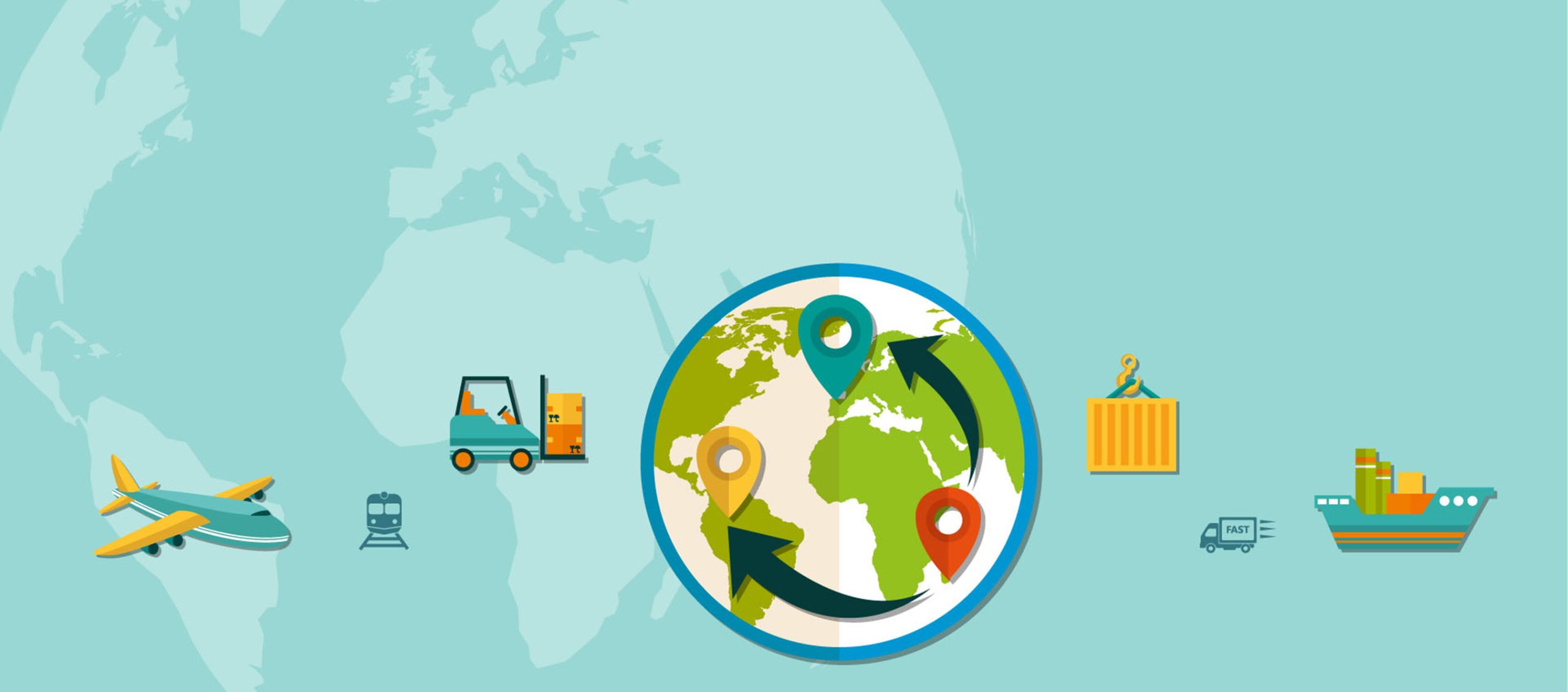
From H&M to Hobbycraft, retailers are using international online marketplaces to boost growth.
But for retailers dipping their toes into international waters for the first time, even with the assistance provided by third-party platforms, exporting can raise red flags.
So, how can retailers be sure marketplaces will provide a successful route to selling online overseas?
We spoke to retailers with experience of using international marketplaces to find out how the platforms have driven business outcomes and impacted sales, and what advice they would give to other brands looking to join marketplaces.
Topshop’s marketplace moves
After a weak fashion market and increasing online competition saw sales figures falter at Topshop and Topman, the Arcadia brand shuttered its US businesses and earmarked nine of its UK stores for closure to focus on digital.
This strategy includes building on its established partnership with Berlin-based marketplace Zalando, as well as partnering to sell on Asos, Next and Very.
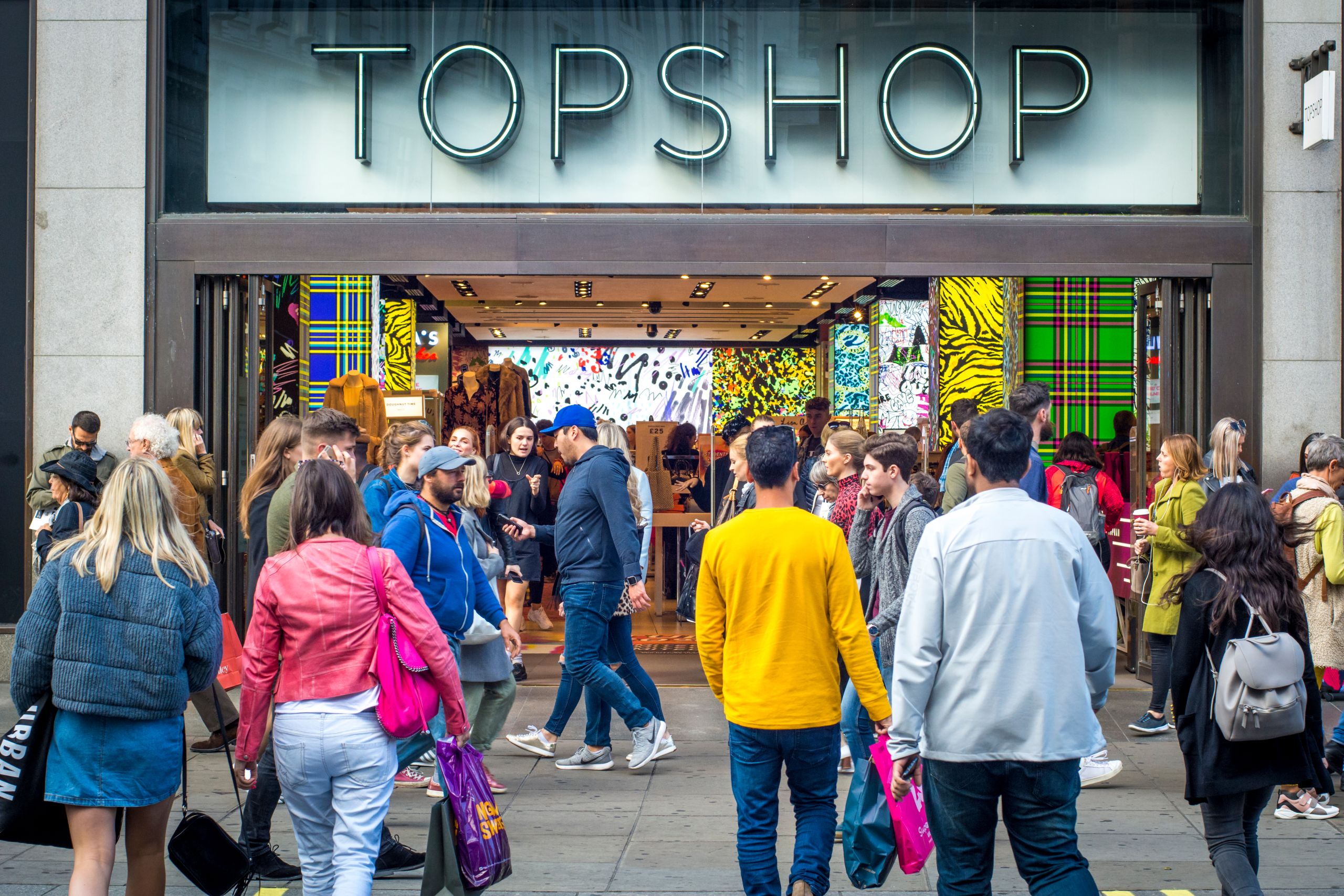
Using marketplaces to ‘reach beyond’
For Nick Stowe, chief operating officer at Monsoon Accessorize, partnering with a variety of online marketplaces has enabled the fashion retailer to enjoy “very strong growth”.
Stowe explains: “It has helped us reach customers we would not have otherwise. Our marketplace partners have platforms and reach beyond those we serve directly. It has also helped us test and understand the differences across regions and countries, which has been great for our product and buying teams.”
Jade Oliver, owner of Heavenly Homes and Gardens, which started life as an Ebay-only home decor retailer, advocates the financial returns of incorporating third-party platforms for global growth.
Since its launch on Ebay, Heavenly Homes and Gardens has expanded with its own website and bricks-and-mortar store, but Ebay remains the brand’s largest revenue source.
The business has enjoyed year-on-year growth in Ebay customers since it started trading, as well as significant returning trade on the platform. Oliver says the retailer averages around 600 orders per month for Ebay customers, with orders rocketing in winter and dropping in the summer months.
“The UK is one part of a global market. If you are a UK retailer only selling domestically, you are missing a massive trick”
Dean Oldham, fulfilment and customer services manager at luxury fashion retailer Jules B – which sells via its own site, store network and marketplaces such as Amazon, Ebay, Fruugo and Atterley – shares Oliver’s view that marketplaces can boost the bottom line.
He asserts that the primary advantage of utilising international marketplaces has been “the sharp increase we’ve seen in potential customers, leading to more orders and increased profits”.
“In the UK, our business must compete in an overcrowded market, but we’ve found there’s less competition in many other countries,” Oldham explains.
Like Jules B, music retailer Rarewaves has enjoyed an upshot in sales using online marketplaces such as Ebay.
Back in 2005, founder Brad Aspess – who had collected more than 100,000 vinyl records at the time – identified a gap for selling music products such as CDs, cassettes and vinyl online, and set up a UK shop through Ebay.
In just one year, his Chiswick-based business was exporting to Germany, France, Australia and America. The company sourced 600,000 products from 150 suppliers, expanding into entertainment goods, books, gadgets and games. Within the first 12 months of exporting, Rarewaves had sold products to consumers in more than 170 countries.
Alongside Ebay, Rarewaves now sells via third-party marketplaces including Amazon Worldwide, Rakuten, Fnac, PriceMinister and Game to widen its scope beyond UK consumers. Four weeks after signing a deal with Amazon Australia, Rarewaves generated £60,000 worth of sales on the platform.
For Aspess, having a global mindset is key for retailers to succeed: “The UK is one part of a global market. If you are a UK retailer only selling domestically, you are missing a massive trick.”
“Ebay gave us early exposure to customers and markets that we couldn’t have accessed alone”
Rebecca Holmes, founder of pop culture apparel brand Vanilla Underground, shares Aspess’ view and says Ebay has played a “crucial role in shaping the business into what it is today”.
Holmes says Ebay “gave us early exposure to customers and markets that we couldn’t have accessed alone”.
Utilising the platform also allowed Holmes’s team to research competitors and gain insight into marketplace demands and trends. Holmes says this has led to “unprecedented growth year on year, both in terms of revenue, and new and returning customers”.
Attracting new customers has been an upside of marketplaces for protein water retailer Vieve. The brand has sold into five European markets on Amazon for the past two years, and founder Rafael Rozenson says this has broadened its audience and driven international awareness.
“Marketplaces allow us to extend the reach of the brand without the need to generate significant investment towards setting up local websites and sinking money on marketing to increase SEO,” explains Rozenson.
Stowe emphasises that the flexible nature of marketplaces has been beneficial to Monsoon’s cross-border ecommerce strategy. They are a permanent component of the brand’s digital strategy, but the role they play is market-dependent, he explains.
“In some places – China, for instance – marketplace platforms will be the only digital play for us in the near- to mid-term; in others, such as the US and EU, they’ll sit alongside our ecommerce.” He continues: “Marketplaces offer a great way to test and learn.”
Capitalising on consumer trust

Cross-border ecommerce sales currently comprise 77% of Vanilla Underground’s revenue.
Holmes says the easy integration of new territories available through marketplaces allows the fashion brand to “set and achieve substantial goals within our broader ecommerce strategy”. For Holmes this revenue upside has been supported by the existing trust consumers have in Ebay’s platform.
Oldham agrees and believes customer faith in marketplaces is a bonus for retailers: “When placing an order through a well-known, renowned international platform, the customer often feels more confident in their purchase.
“We often find that customers feel more secure and knowledgeable about their rights as a buyer, which ultimately leads to an increase in the amount of international orders received through these platforms.”
Returns shouldn’t be overlooked

Operating internationally is accompanied by new challenges and, while all the retailers we spoke to advocated marketplaces, they also highlighted one major issue: returns.
For Monsoon Accessorize, Stowe say returns with one specific marketplace have been challenging. To overcome this, the retailer is investing in its technology platform to make it easier and more efficient to service marketplaces.
For Heavenly Homes and Gardens, Oliver has also encountered some returns issues. She notes that “buyer abuse of the returns system can be a problem, whereby customers claim an item isn’t as described in order to get a free returns postage label”.
Oliver explains that this issue “is something we factor in as a business cost”, but it can result in repercussions from Ebay if a large number of cases are opened.
The returns story is similar at Vanilla Underground. Holmes explains: “When shipping overseas, our postage services hand over to local postal services, which can sometimes be hard to manage and track.”
She notes that marketplaces could offer further logistics support and feedback management.
Going for global
Looking to the future of Monsoon Accessorize’s global ecommerce strategy, Stowe puts the emphasis firmly on expansion: “We’ve seen great growth across our brands, and we’re investing in a new ecommerce platform, raising our marketing game and continuing to build our marketplace relationships.
“We’re doing the obvious stuff, but our reach will be better this year, and our experience on our own and our partners’ platforms is just going to get better.”
This sentiment is shared by Rarewaves’ Aspess. He has ambitions to double annual company turnover to more than £20m within the next 12 months and intends to widen exporting activities further.
To support its growth, Rarewaves has partnered with DIT – a move that Aspess projects will significantly boost growth and international expansion.
Meanwhile, Vanilla Underground is “going for growth”. Currently on track for 2019 to be its biggest year in terms of revenue and growth, the brand is pushing its Ebay store as much as possible.
Holmes says: “We are optimising content and working on our distribution network and logistics partners to make our products available to more countries worldwide, so we are able to ship to places like Asia and South America. We want to be known and successful worldwide.”
Selling Online Overseas
The DIT Selling Online Overseas tool helps retailers join marketplaces worldwide and has brokered exclusive incentives and offers.
There are more than 30 marketplaces accessible via the tool, including:
- 1688
- Amazon
- Ebay
- Flipkart
- Fruugo
- JD Worldwide
- Newegg
- OnBuy
- Rakuten
- Spartoo
Marketplaces under the microscope
Three marketplaces accessible to retailers via DIT’s Selling Online Overseas tool include:

Fruugo spans 42 countries, 17 languages and 22 currencies. Operating on a no-sale, no-fee basis, Fruugo takes care of translation, customer service, marketing and foreign exchange. This allows retailers to quickly launch into overseas markets with low risk and low investment.
Furthermore, retailers applying to join Fruugo through DIT get a 10% lifetime reduction in standard commission charges, which stand at 15%.
Two-thirds of all sales are cross-border, with an average order value of £45. The marketplace doesn’t offer any logistics support, however, so businesses will need to fulfil their delivery and returns internally.
Retailers selling via Fruugo include Bath & Unwind, Brown Bag, Conrad, Howleys, Internet Gardener and Jaks Beauty Parlour.

The world’s fourth-largest marketplace, Rakuten is Japan’s leading ecommerce platform. Rakuten helps UK businesses develop brand presence and offers retailers a choice of four store management plans.
The marketplace takes a commission of between 8% and 12%, and a membership fee of JPY 19,500 (£148) per month, in exchange for access to its 105 million users.
Sellers require the services of a third-party company to provide the legal and financial entity in Japan; a group of partner service providers assist with this, as well as final-mile delivery and returns services.
Present experience in ecommerce at a domestic level is the minimum requirement to join, and Rakuten doesn’t offer delivery and logistics support, so retailers will need to manage their own fulfilment.
Retailers and brands selling on Rakuten include Adidas, Clinique, Dr Martens, Levi’s, Revlon and The Body Shop.

One of the biggest marketplaces in the world, Amazon provides companies of every size with an international sales channel. Amazon stores, packs and delivers products to customers, provides customer service and handles returns via its Fulfiment by Amazon (FBA) shipping programme at additional cost.
Membership fees and commissions vary from platform to platform. For example, Amazon USA charges $39 (£32) per month and takes a commission of between 8% and 45%, while Amazon AE, which targets UAE consumers, doesn’t currently charge a membership fee and commission sits at between 10% and 15%.
Fulfilment and delivery requirements vary across its platforms, too; for instance, Amazon USA requires retailers to manage parcel tracking, whereas Amazon Germany does not.
Three things to consider before launching on a marketplace
According to Retail Week and Mirakl’s 2018 Adopting a Marketplace Mindset report, 44% of retailers were already using, or were in the process of implementing, a marketplace model, but 32% felt they lacked the internal expertise to launch on a marketplace.
However, it could be a potentially fatal mistake to let a lack of confidence hold a business back. Retail Week’s World Retail Congress 2019 High Velocity Retail report suggests that marketplaces are increasingly becoming the starting point for online shopping missions, replacing search-based platforms in customer acquisition.
The report also highlights that the revenue of online international marketplaces has grown at three times the rate of standalone ecommerce players.

The influence and commercial opportunities presented by marketplaces is clear, so how can retailers ready themselves to utilise them to take the leap overseas?
1. Consider international product demand
Tejas Dave, founder of dropshipping automation platform Avasam, recommends retailers take a mature product line with an established fulfilment and support team, and identify an overseas market that is being underserved or badly served for these products. “This is a key opportunity indicator to capitalise on the mistakes of your competitors,” he says.
Dave also highlights marketplace opportunities for retailers with seasonal products, as selling in other markets allows retailers to circumvent the typical off-season slump. Sportswear retailer Mountain Warehouse, for example, has partnered with Ebay to boost its sales year-round.
The outdoor goods retailer has also targeted its approach to specific markets. In 2015, the business struck a deal with Alibaba to support its entry into the Chinese market and began by selling 300 items on Alibaba’s Tmall website.
DIT advises retailers to request market research from the government and to use its Selling Online Overseas tool to match their products with the right international marketplace. To find your local DIT office, click here.
2. Keep the marketplace’s specialism front of mind
It’s vital that retailers ensure there is a clear link between their target audience and the marketplace’s customer base.
Miya Knight, head of industry insight at software platform Eagle Eye, advises retailers to keep the platform’s specialism front of mind: “Match the stock the marketplace is trying to sell and the customer expectations of those using the platform.”
3. Brand identity matters
One essential component for retailers operating through marketplaces is to ensure their brand identity doesn’t get lost within the branding of the wider platform.
Shoppers should receive a seamless customer experience throughout their entire journey, no matter how many third parties are involved in the process – everything from the marketplace to the payment processing platform to the delivery company.
Brand identity has been front of mind for retailer Jules B, with Oldham suggesting that “by ensuring our customers have a positive shopping experience on our international marketplaces, we find they often return to our website directly to place more orders with us”.
“We deliver a personal experience – from the packaging of our parcels to our messages to customers – and this helps create customer loyalty,” he says.
The right marketplace
When making the leap into using international marketplaces, a clear returns policy – and a good language translation app – are vital

Having heard firsthand from retailers about their experiences of adopting marketplace models, it’s clear there are marked benefits of using a third-party platform to shape a business’s international ecommerce strategy.
But what are the challenges? How do retailers identify the right marketplace for them and, for that matter, whether marketplaces are right for them at all?
Below, we’ve rounded up the key factors that are crucial to finding the right platform and identifying whether a marketplace strategy is fit for purpose.
Customer service
The retailers who spoke to Retail Week named customer service as one of their toughest obstacles when making the leap to using international marketplaces.
Jules B’s Oldham underlines the importance of getting this right: “Wherever possible, do the utmost to assist the customer and avoid any claims or negative feedback. The account health is vital for your business – this shows the customer that you are a reliable company and draws them into placing orders, ultimately driving sales.”
Vieve’s Rozenson notes that there can be other customer service issues surrounding language barriers. “The biggest challenge we have faced has been occasional customer service issues that have been written in languages we do not speak,” he says. “However, we have found that Google Translate works wonders for this exact purpose.
“We have also had to translate our listings to appeal to consumers in our target countries, which was an additional cost. We have found that spending this little bit extra has been worth it as our products are now in front of customers that would have otherwise missed out.”

Delivery and returns
While marketplace partners often offer delivery and returns assistance, retailers should review delivery capabilities before agreeing to sell via a third-party platform. Marketplaces do not always offer delivery and shipping for free, or may require you to organise your own shipping, so this should be carefully considered.
Shoppers now expect agile delivery as standard, so the final-mile logistics of marketplaces cannot be ignored. Research from Retail Week’s 2018 The Delivery Battleground guide finds that 70% of consumers want more flexible delivery options, while delivery software provider Sorted reports that “around 60% of retailers’ inbound customer service calls are ‘Where is my order?’ with each call entailing a cost to the retailer”.
To meet customer delivery demands, Vanilla Underground’s Holmes advises retailers to review marketplaces’ “shipping carriers and costs to ensure a smooth and faultless service to overseas customers”.
“Customers in other territories are inherently more critical of overseas sellers; it’s critical to ensure you are able to provide as much of a secure and efficient service as you would to your domestic customers.”
Licensing, customs duties, tariffs and taxes
It’s essential that retailers thoroughly research customs duties, tariffs and taxes in their chosen markets. For example, if tariffs are especially high in one market, should the retailer let the customer take the hit – potentially deterring them from buying – or slash its prices to make up the difference?
Using DIT’s market guides, retailers can get country-by-country advice on tax, VAT, customs and other regulations.
Retailers may also need to apply for an export licence through the government’s website, as well as local permits or licences to sell goods in a new market.
Marketplaces = no silver bullet
While this guide has clearly shown that online marketplaces can boost retailers’ bottom lines, customer numbers and global reach, there is more to the story.
Depending on a brand’s equity and positioning, pursuing a marketplace strategy won’t necessarily be the right action, and the one-size-fits-all approach of marketplaces won’t work for every business.
Weighing up the pros and cons is crucial, so we’ve highlighted three of the biggest concerns for retailers to consider.
Loss of control
By operating through a marketplace, retailers don’t have full ownership; this spans everything from how a product is displayed against a competitor to the customer data they are required to share. Retailers must also share revenue and a cut of any profits they make.
For these reasons, some retailers have been sceptical of using marketplaces or have pivoted their strategies. Nike is a high-profile example of a brand that has recently removed itself from a marketplace to gain more control.
In November 2019, the sportswear company announced it would be cutting ties with Amazon and stop selling its trainers and apparel via the marketplace. This ended a pilot programme that began in 2017, which saw Nike act as a wholesaler to Amazon.
“As part of Nike’s focus on elevating consumer experiences through more direct, personal relationships, we have made the decision to complete our current pilot with Amazon Retail,” the brand said in a statement.
Nike’s u-turn shows that, for retailers focused on direct-to-consumer (DTC) relationships, marketplaces aren’t always the answer. Yet, for smaller brands with less ubiquity and scope than Nike, they can be the right fit.
Counterfeit culture
Counterfeit goods are not uncommon on marketplaces, and unauthorised sellers have been known to undercut the prices of products being sold by known brands.
Action is being taken to address this problem, though. Amazon, for instance, recently launched Project Zero, a self-service counterfeit removal tool that enables retailers to delete knock-off products. The technology is also intended to help reduce the volume of fake products on its site.
Ebay has also shouted about the steps it takes to tackle counterfeit culture. It prohibits fake goods on its site and monitors activity that doesn’t follow this policy.
Penalties for those found to be selling counterfeit items include administratively ending or cancelling listings, hiding or demoting all listings from search results, lowering seller ratings, buying or selling restrictions, loss of buyer or seller protections and account suspension.
Pricing wars
By its very nature, selling on marketplaces means there’s greater competition on price, so retailers will need to consider their pricing strategy and market value carefully.
However, selling on a marketplace doesn’t have to be a race to the bottom – and this applies to retailers selling high-value items.
For example, luxury leather goods brand Maxwell-Scott – which retails items priced from £200 through to £1,000+ – sells via Amazon and now achieves 25% of its export sales through the platform.
Maxwell-Scott founder William Forshaw has said that “working with Amazon has allowed us to save money on buying our own warehouses and additional manpower, and focus on growing other areas of the business”.
Last words
Importantly, selling via marketplaces doesn’t to have be a standalone activity; it can form one part of a retailer’s wider global multichannel strategy.
In the second guide in this series, we’ll explore how retailers can power a cross-border strategy for sales success via international website optimisation and localisation, digital lead generation, social commerce and more.
Next steps

DIT’s E-Exporting Programme, complete with its Selling Online Overseas tool, assists retailers seeking to take advantage of marketplace opportunities. The programme provides export-related ecommerce assistance to help UK companies start or grow their business overseas.
The E-Exporting Programme enables retailers to:
- Arrange a free meeting through their local DIT office to gain expert international trade advice and support.
- Meet a DIT ecommerce adviser who will assist in the development and implementation of an international ecommerce strategy.
- Set up on marketplaces and identify new marketplaces around the world via the Selling Online Overseas tool.
- Access exclusive deals, including lower platform fees, reduced commission rates and free trials for some marketplaces.
- Access free merchandising adverts for brands on marketplace homepages through DIT promotions with partner marketplaces.
- Access a network of ecommerce advisers around the UK who offer one-to-one troubleshooting for businesses, covering everything from introducing logistics suppliers and working with integrators, to website optimisation and seller account issues. These advisers also provide market research and data-gathering services.
DIT also has local trade offices located around the UK, where retailers can contact an international trade adviser.
To find out more, email e-exporting@trade.gov.uk
Partner comment


Jamila Saidi is head of the UK Department for International Trade’s E-exporting Programme
Ecommerce is rapidly changing the global business and trade landscape, enabling more retailers to access international markets.
Global trade via ecommerce is expected to almost double from 8.7% to 15.5% by 2021 as a percentage of global retail. Ecommerce is becoming more international, with cross-border online retail predicted to grow at twice the rate of domestic ecommerce until 2020.
Marketplaces are also playing an increasing role in enabling cross-border trade. Globally, marketplaces own 56% of cross-border ecommerce. In the UK alone, 70% of consumers purchase products from online marketplaces one to two times per month.
Cross-border ecommerce and the use of marketplaces offer huge opportunities for companies to grow and sell directly to international consumers. UK businesses are well placed to take advantage here.
We are one of the most advanced ecommerce markets in the world with a reputation for creating and nurturing world-renowned retailers and brands.
The DIT’ s E-Exporting Programme was set up to help UK companies like yours take your brands to the world through online channels.
The programme provides ecommerce export-related services to help retailers grow their businesses by selling products or services to global online consumers.
Launching on international online marketplaces can seem daunting, but we’re here to help UK retailers benefit from our services, including our network of ecommerce advisers, who provide free one-to-one tailored support and access to negotiated partnerships with marketplaces.
The ultimate guide to unlocking global growth: part one
Written by Caroline Howley
Produced by Megan Dunsby, Donatella Montrone,
Rebecca Dyer and Helen Berry
In partnership with the UK Department for International Trade

